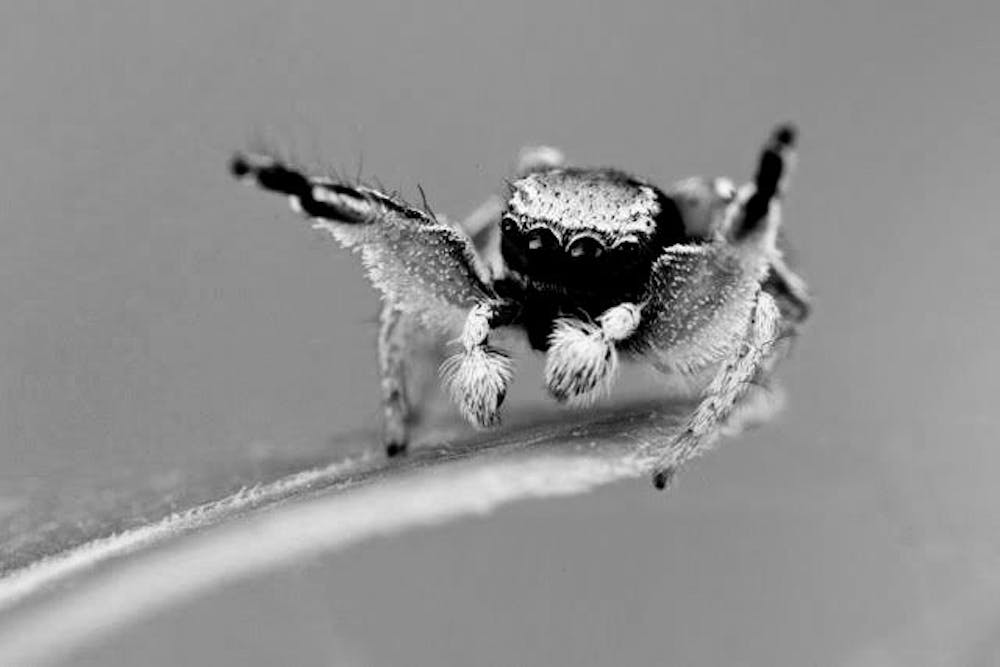First dates can be a pain.
Among people, they’re often characterized by awkward silences or unshakable nerves.
But among jumping spiders, a pencil-eraser-sized arachnid common in Florida, they can be fatal.
In the first study of its kind, a UF researcher has found that cross-species courting attempts by male jumping spiders sometimes end with a phenomenon called sexual cannibalism.
Lisa Taylor’s research was published April 5. Taylor, who researched while pursuing her doctorate at Arizona State University, said the predatory females will eat a male if he doesn’t interest her or if he is the wrong species, of which there are more than 100.
Despite this apparent violence, Taylor said the findings don’t hamper her adoration for the bite-size bugs.
“Most spiders that people are familiar with are kind of scary and creepy, and just not particularly charismatic,” she said, “but jumping spiders are really adorable.”
She said the males courting habits could be explained by them being unable to tell the different species of females apart. It’s up to females to distinguish the bright, multi-colored males, and they may attack them as an available food source.
Kevin McGraw, an ASU life sciences professor, advised Taylor on her study. He said sexual cannibalism is only shown in a few spider species and praying mantises.
He said female jumping spiders have evolved to be larger so they can produce and carry more eggs, while male jumping spiders are smaller and more agile.
“I’m not saying the females are couch potatoes by any stretch,” McGraw said.
A micro-CT image of a scanned jumping spider, called Anasaitis canosa.






